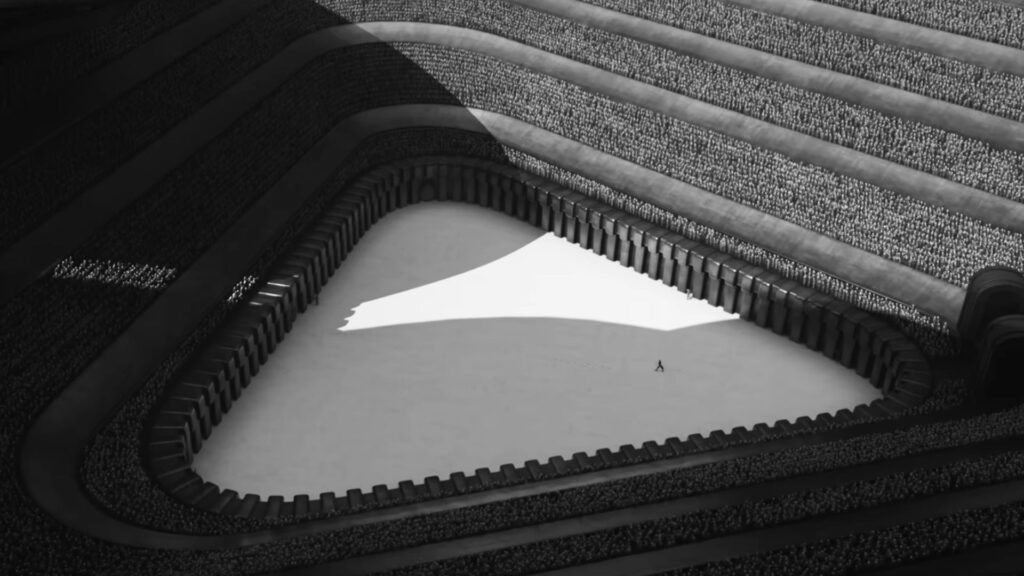In Dune: Part 2, the world of the Harkonnens is black and white. An idea from Denis Villeneuve and Greg Fraser, which was irreversible during the filming of the film.
If Dune 2 makes an impression, it is not only as a successful adaptation of Franck Herbert’s novel: it is also through its breathtaking cinematography. Among the choices of the director, Denis Villeneuve, and the director of photography, Greg Fraser, there are very personal aesthetic interpretations of Dune. This is how, for example, the antagonist Feyd-Rautha (Austin Butler) – among the Harkonnens – is very different from that of David Lynch’s film, more “monstrous”.
Another distinctive choice, still concerning the Harkonnen: black and white. All the scenes happening in the world of this family passed under this specter. This may have surprised readers: this particularity is not directly mentioned in the book. Denis Villeneuve, however, explains that he gets this idea from Franck Herbert.

The inspiration for the book is, in fact, indirect. “ One of the aspects I like about this book is the idea that it is a study of the impact of the ecosystem on human beings », Explains the director in Moviefone. In short: the nature of the ecosystem impacts the nature of the people. “ We are a product of our environment and when you want to know more about the Fremen, just look at the desert and it will tell you about the indigenous people. »
A black and white that seems to “come from another world”
It is for this reason that the director wanted to represent the planet of the Harkonnens in black and white. This is described in the book as an artificial world, “ plastic “. What impact on the psyche, on the very perception of reality in such a context? How to represent it in cinema? “ What if, instead of revealing colors, the sunlight killed them and created a very disturbing black and white world, that would give us information about how these people perceive reality, about their political system, about brutalist culture primitive », explains Villeneuve.
“When you shoot like this, there’s no going back.”
Denis Villeneuve
But a simple black and white wasn’t enough. The director wanted to achieve a very particular contrast: “ I wanted a black and white that seemed alien and otherworldly, a sunlight we’ve never seen in cinema. » This is how Greg Fraser came up with the idea that changed everything: filming in infrared.
The choice was courageous: the producer, Mary Parent, had to agree. Because Greg Fraser’s proposal was not subject to a post-production filter: it was necessary to shoot directly like this. “ When you shoot this way, there’s no turning back », specifies Villeneuve. Impossible to add color once this shoot is finished. The choice had to be final beforehand.


Subscribe for free to Artificielles, our newsletter on AI, designed by AIs, verified by Numerama!
